
RATING

Positive
SECTOR
Sporting Goods
Chief Sustainability Officer
Noel Kinder
Contact Details:
LinkedIn
Stock Exchange and Ticker
NYSE: NKE
Website
Contact
T: N/A
E.mail: N/A
Listing
- #63 Mexico’s Best Employers (2022)
- #37 World’s Best Employers (2022)
- America’s Best Employers By State (2022)
- #4 Canada’s Best Employers For Diversity (2022)
- #181 Best Employers for New Grads (2022)
- #212 Global 2000 (2022)
- #358 Best Employers for Diversity (2022)
- #260 America’s Best Large Employers (2022)
- #54 Canada’s Best Employers (2022)
- #101 Best Employers for Veterans (2021)
- #92 World’s Top Female-Friendly Companies (2021) – Dropped off in 2022
- #286 Best Employers for Women (2021)Dropped off in 2022
- #254 America’s Best Employers (2021)
Awards
- Sustainalytics ESG Risk Rating – Low Risk
- CDP, Climate Change 2021 – A-
- CDP, Water Security – F
- CDP, Forests – F
Revenue
$46.71B
Market Capitalisation
$149.87B
Employees
79.100
Content source
- Purpose – NIKE, Inc.
- https://www.forbes.com/companies/nike/?sh=35293d556eb5
- https://about.nike.com/en/newsroom/reports/fy21-nike-inc-impact-report-2
- Nike employees worldwide 2022 | Statista
- https://www.google.com/search?q=nike+revenue+2022&oq=nike+revenue+2022&aqs=chrome..69i57j0i512l2j0i22i30l7.2961j1j4&sourceid=chrome&ie=UTF-8
Nike Sustainability Report
Evaluation of Nike
Through recycling Nike diverted all manufacturing waste from landfills in 2021. Their largest impact area, materials, account for 70% of their carbon footprint. They have very clear goals and are making good progress toward reducing the impacts. They are also dedicated to resource conservation, water efficiency, and recycling. They serve as role models in the business world due to their collaborations for the various objectives. They also acquire certificates attesting to their advancement. They were unable to win any reputable awards, indexes, or rankings, though. Last but not least, they have a largely positive online reputation.
Sustainability Scorecard
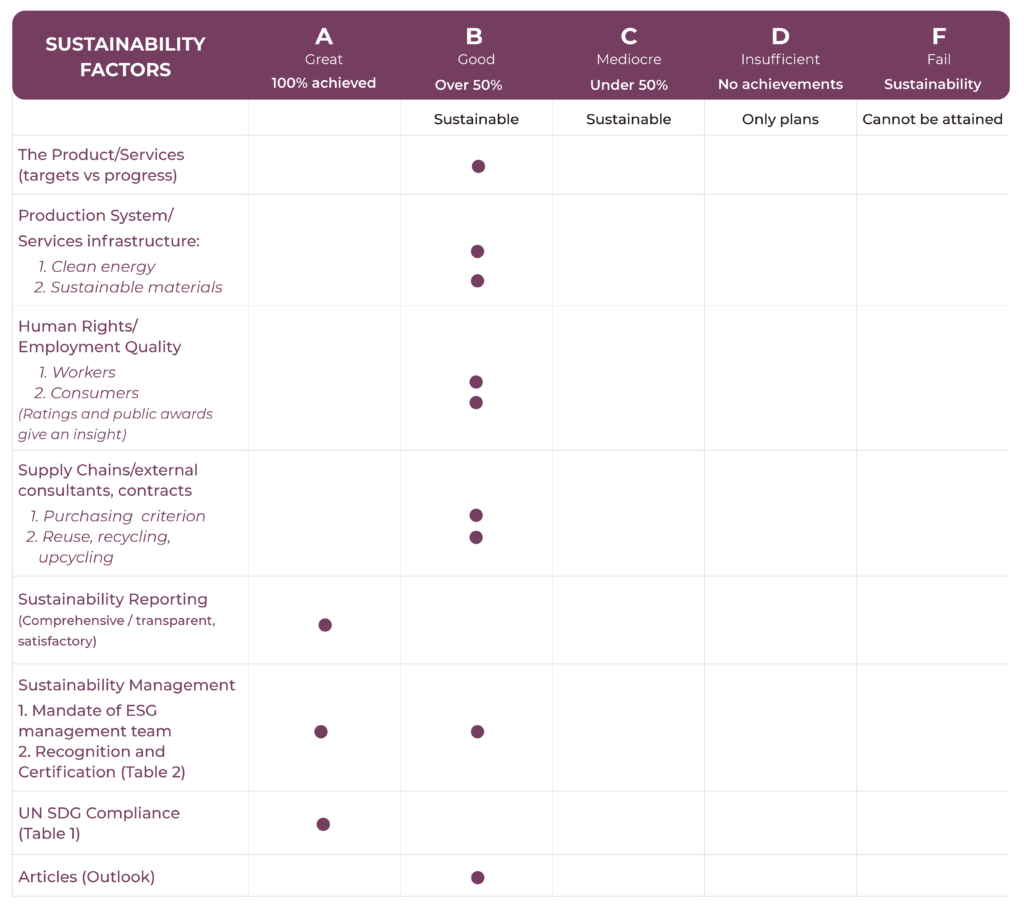
Nike Company Activity
NIKE, Inc. engages in the design, development, marketing, and sale of athletic footwear, apparel, accessories, equipment, and services. It operates through the following segments: North America; Europe, Middle East & Africa; Greater China; Asia Pacific & Latin America; Global Brand Divisions; Converse; and Corporate. The North America; Europe, Middle East & Africa; Greater China; and Asia Pacific & Latin America segments refers to the design, development, marketing, and selling of athletic footwear, apparel, and equipment.
The Global Brand Divisions represents NIKE Brand licensing businesses. The Converse segment designs, markets, licenses, and sells casual sneakers, apparel, and accessories. The Corporate segment consists of unallocated general and administrative expenses. The company was founded by William Jay Bowerman and Philip H. Knight in 1964 and is headquartered in Beaverton, OR.
Nike Sustainability Activity - As per company declarations
Nike is part of the Fashion Industry Charter for Climate Action, a commitment under the United Nations Framework Convention on Climate Change.
Nike joined UN Climate Change and global brands, retailers and suppliers in accelerating some of the industry’s most aggressive climate targets yet – including a 30% reduction in aggregate greenhouse gas emissions by 2030 and a vision to achieve net-zero emissions by 2050. However, judging by Nike’s actions, it seems more of a marketing campaign that repackages old promises without offering new ones instead of a commitment made by an industry leader on leading the effort on sustainability.
Certificate & Labels, Standards and Frameworks
- Code Leadership Standards (CLS)
- RE100
- Fashion Industry Charter for Climate Action under the auspices of UN Climate Change
- Commitments to Paris Climate Agreement
- Science Based Targets initiative
- G7 Fashion Pact
- Leadership in Energy and Environmental Design (LEED) certification
- LEED Gold certification
- LEED Platinum certification
- Energy Attribute Certificates (EAC)
Nike in the news: Press Reviews and Social Media
How Ethical Is Nike? – Good On You
A report describing the poor pay and unfavorable working conditions in Nike’s Indonesian factories was published in 1991. Nike was initially reluctant to react, but it has since improved its supply chain. There is no proof that Nike is on track to meet its science-based target for reducing greenhouse gas emissions from its operations and supply chain. Nike has water reduction initiatives in place throughout its supply chain and uses some eco-friendly materials, such as organic and recycled cotton and polyester. Nike still has a ways to go before it can be genuinely referred to as a sustainable brand, even though it has made some positive changes to its environmental practices and is a member of the Sustainable Apparel Coalition.
The Clean Clothes Campaign and Collectif Ethique sur l’Etiquette’s Foul Play report demonstrates how far Nike still has to go in terms of living wages. In the report, Nike and Adidas are urged to commit to paying living wages throughout their supply chains by a particular date and to take additional supportive measures. Nike has implemented a number of promising environmental policies. However, the business needs to make significant changes because it is not acting as much as it should. The Danish company’s philosophy centers everything around sustainability. For both men and women, Organic Basics offers premium sustainable fashion basics made of organic materials.
Nike’s Marketing Approach with Sustainability Efforts
Nike thinks that no company can expand without making sustainability efforts. The company’s vision is to use resources like materials, water, and energy sustainably to lessen its negative environmental effects. By 2020, Nike wants to have released no hazardous chemicals into the environment. Consider the long term rather than the short term when planning your marketing strategy, and make sure your foundational plan is in line with the positioning and vision of your brand for the coming years. When companies include sustainability in their vision, they acknowledge the need to care for the environment and improve society and the planet that we all share.
Nike has always prioritized the needs of its customers, and this has served as the cornerstone of all of its brand marketing initiatives. Nike has freed itself from the constraints that most sports shoe and apparel manufacturers face by combining its marketing and sustainability initiatives. Nike’s “Just Do It” slogan has taken center stage in the brand’s marketing strategy. Although it is still crucial, the company is less concerned with standard compliance and more concerned with rewarding factors for management practices and continuous improvement. Nike is looking for areas and manufacturing partners who can provide higher quality, as higher sales will result.
What Nike’s Commitment to Sustainability Teaches Us About Innovation | Dell Technologies Italy
Nike is the largest producer of athletic footwear in the world, with annual sales of over $20 billion. Nike started collaborating with designers, scientists, and coders in 2004 to better understand the components of today’s fashion products. Nike introduced the Nike Materials Sustainability Index eight years later (NMSI). The company then released the MAKING app by combining this data set with an easy-to-use interface. The app currently concentrates on four major impact areas: Chemistry, Energy/Greenhouse Gas, Water/Land, and Physical Waste.
Nike has long aimed to completely rethink innovation and sustainability. The business later used this data set in conjunction with a user-friendly interface to create the MAKING app, a tool that aids designers from various industries in selecting environmentally responsible materials for their creations. A piece of running footwear called the Nike Flyknit generated no waste while maintaining a high level of performance. According to Phil Jones, a co-founder of Nike, “we stopped seeing sustainability and labor rights as a risk and burden and instead saw them as a source of innovation.” Flyknit, a product of the business, was named 2013’s Most Innovative Company by Fast Company.
Top fashion brands like H&M, Zara and Nike called out for greenwashing | Retail News Sweden
Despite adopting sustainable practices through the implementation of various sustainable programs, several well-known fashion companies, including H&M, Zara, and Nike, utterly fail to put those practices into practice. The aforementioned companies are indeed in the news once more, this time for greenwashing. According to reports, H&M, the second-largest fashion retailer in the world, uses deception to get customers to buy more clothing than they actually need. The retailer’s annual production of 3 billion garments cannot be made up for by encouraging recycling and urging customers to do the same. It’s not just H&M, either! Noel Kinder, Chief Sustainability Officer at Nike, acknowledges that some of the goals the company set for itself might not be achievable.
The former also fails to provide any certification for their textiles and has a number of complaints related to labor rights violations. Similar to this, Nike’s Move to Zero campaign bills itself as the roadmap for the company’s pursuit of zero waste and zero carbon emissions. Nike’s Chief Sustainability Officer, Noel Kinder, acknowledged that some of the goals the company had set for itself, like diverting 99 percent of all waste from the manufacturing of shoes from landfills and cutting water use in Nike’s entire supply chain by 20 percent by 2020, were not entirely feasible and might be more challenging to achieve than first anticipated.
Highlights from Nike Sustainability Report
Achievements
- 70% absolute reduction of GHG emissions in owned or operated facilities through 100% renewable electricity and fleet electrification
- 25% reduction in freshwater usage (L per kg) in textile dyeing and finishing
- In FY21, they reminded the world that girls are made to play. They directly reached nearly 600,000 kids around the world – 55% of whom were girls.
- They shared their practices and tools with more than 24,000 coaches and helped train nearly 6,400 of them in delivering fun, inclusive experiences to all kids
- Over the past two years, they’ve donated 75,000 NIKE Swoosh sports bras and 3,000 NIKE Pro hijabs through their community partners to girls around the world
Weaknesses and Setbacks
- Not enough recognition, especially awards
Targets vs Progress Reported
| Target | Results reported |
|---|---|
| Representation & Hiring | |
| 50% representation of women in global corporate workforce and 45% in leadership positions | - 50.4% women in global workforce - 43.0% women in leadership positions |
| 30% representation of U.S. racial and ethnic minorities at Director level and above | 30.3% U.S. racial and ethnic minorities at Director level and above |
| 35% representation of U.S. racial and ethnic minorities in their U.S. corporate workforce | %34.2 U.S. racial and ethnic minorities in U.S. corporate workforce |
| $10 million investment in Historically Black Colleges and Universities (HBCUs) and Hispanic-Serving Institutions (HSIs) | $450.000 invested |
| Pay & Benefits | |
| 100% pay equity across all employee levels on an annual basis | 100% pay equity across men/women; white/U.S. racial and ethnic minorities |
| Health & Safety | |
| 100% of strategic suppliers are building healthy and safe workplaces | 27% suppliers with Level 3 health and safety maturity (5% increase compared to FY20) |
| Education & Professional Development | |
| 100% of Vice Presidents complete and be credentialed on Inclusive Leadership education 5 | 0% VPs completing training |
| 2x investments focused on professional development for racial and ethnic minorities in the U.S. and women globally | $85.000 invested on professional development (9000$ increase compared to FY20) |
| Business Diversity & Inclusion | |
| $1 billion cumulative spend on diverse suppliers | $197M spent on diverse suppliers |
| Foundational Expectations | |
| 100% of facilities in our extended supply chain meet NIKE’s foundational labor, health, safety and environmental standards | - 85% compliance with foundational expectations (9% decrease compared to FY20) - 79% of facilities measured for compliance of anticipated total scope (13% increase compared to FY20) |
| Active Kids | |
| Drive sustained community impact by getting kids moving in our key cities and sourcing backyards with 50% girl participation | 55% girl participation |
| Inclusive Community | |
| Invest $125 million to support organizations working to level playing field and addressing racial inequality | $36.6M invested ($13.2M increase compared to FY20) |
| Community Investment | |
| Invest 2% of prior-year, pre-tax income to drive positive impact in communities | %3.4 of prior-year, pre-tax income invested (1.5% increase compared to FY20) |
| Install more than 5,000 additional fast-charging points with charging capacity of up to 350 kW at over 1,000 locations in Europe - using completely renewable energy sources | |
| Carbon | |
| 70% absolute reduction of greenhouse gas (GHG) emissions in owned or operated facilities through 100% renewable electricity and fleet electrification | 43% reduction in owned or operated facility GHG emissions compared to baseline FY20 |
| 100% renewable electricity | 64% renewable electricity |
| Waste | |
| 10% waste reduction per unit in manufacturing, distribution centers (DCs) and headquarters (HQs) | 4% reduction in waste |
| 100% waste diverted; 80% recycled in manufacturing, packaging, DCs and HQs | 97% waste diverted from landfill and incineration - 69% waste recycled |
| Water | |
| 25% reduction in freshwater usage per kg textile dyeing and finishing | 6% reduction in freshwater use |
| 13B liters water restored in our extended cotton supply chain | 2.06B water restorede |
| Chemistry | |
| Adopt clean chemistry alternatives for our 10 priority chemistries across our supply chain | No priority chemistries with clean chemistry alternative |
UN SDGs Compliance Analysis
Progress made toward SDG targets
As reported by Nike
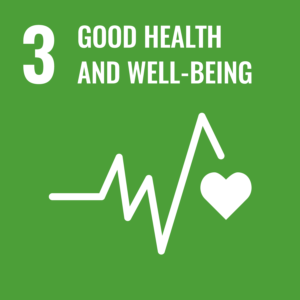
- 4 new programs to support employee well-being, including expanded mental health support, free counseling, financial coaching and increasing access to the Crisis Text Line
- $97. 7M in community investment
- The Retail Experience Program (REP) invests in the first-line athlete development while allowing the NIKE corporate teams they work with to gain a first-hand perspective and to benefit from their expertise
- A subsidy to help their employees with young children with the ongoing cost of childcare. U.S. NIKE full-time employees, including employees within our retail, distribution center and Air MI locations, receive up to $1,800/year per family to offset the cost of childcare
- For employees who continued to work from home due to COVID-19 health and safety measures, they provided them with select technology and ergonomic products through a partnership with Staples
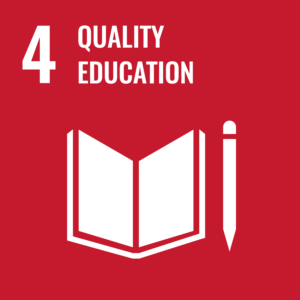
- Serena Williams Design Crew (SWDC) – a six-month apprenticeship program to diversify talent within the design industry
- NIKE’s Human Resources Innovation team partnered with Converse to launch a new internal design apprenticeship program in the U.S. in 2021
- The Academy Program is a one-year rotational program in the
- U.S. that is open to both past and present Head Coaches. At the end of the Academy Program experience, participants are placed in a full-time employee role within NIKE Direct, North America
- A financial coaching and education benefit for all U.S. NIKE employees to help them reach their goals. They engaged Ernst & Young LLP to offer free, unlimited access to professional financial coaching, as well as comprehensive online resources. In launching this benefit, they partnered closely with the NikeUNITED Networks to market the program and drive adoption
- Launched The Source, NIKE’s digital learning platform, to increase employee development through technology-enabled, on-demand curated learning within critical capability area
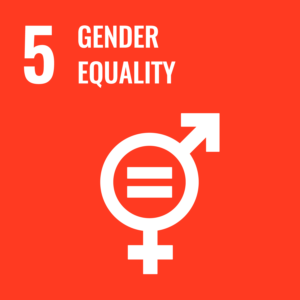
- 3. 7 percentage point increase in women in leadership roles globally to 43%
- 20,000 girls from 223 schools reached through the Boundless Girls program in China
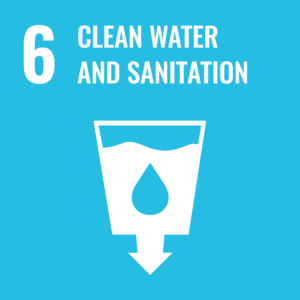
- 6. 7 percentage point reduction in freshwater use for textile dyeing and finishing factories
- They collaborated with Greeley and Hansen, a Chicago-based engineering firm, to provide eight hours of wastewater operations and troubleshooting training over a month in Spanish to approximately 50 wastewater and operators at suppliers in North, Central and South America
- In recognition of World Water Day on March 22, 2021, they gave strategic suppliers around the world nearly 200 copies of the Water Environment Federation Wastewater Treatment Fundamentals training manual in English, Mandarin, Vietnamese and Spanish
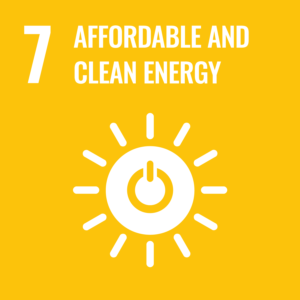
- 78% renewable energy in their owned or operated facilities
- In their Tepana distribution center in Mexico, a rooftop solar array went live
- In Belgium, at the Converse European Logistics Campus, a rooftop solar array also went live
- Piloting programs that allow stores to see actual energy use in real time and adjust operations to reduce energy use
- At their Greater China Headquarters (GCHQ), they expanded their employee electric vehicle (EV) charging network, where now 30% of available parking is supported with EV charging
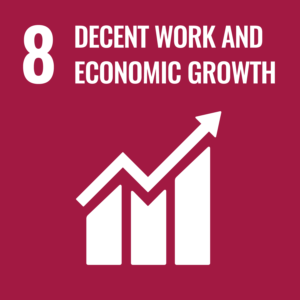
- NIKE is part of the Greater Memphis Chamber of Commerce Buy Memphis pilot B2B procurement initiative. This program engages Memphis companies to develop individual and shared processes and investments for driving more spend to locally, minority- and women- owned businesses
- Through the Starting Line-Partner initiative, they work with community- based organizations to design and deliver a multi-week onboarding experience to reach new distribution center talent while equipping potential candidates with essential skills
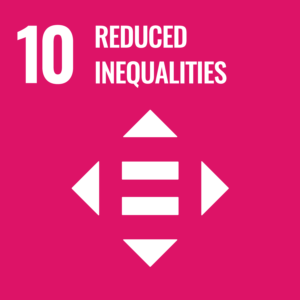
- 4.1 percentage point increase in U.S. racial and ethnic minorities at Director and above to 30.3%
- Created diversity and inclusion learning and development programming
- Initiated a diversity and inclusion mentorship program for corporate employees within the U.S.
- Hired a diversity, equity and inclusion director in EMEA and APLA to develop and execute a location-specific strategy centered on representation, education, development and community
- Increases awareness – while destigmatizing the word “disability” by expanding and promoting learning and development opportunities
- Fosters a culture of belonging and inclusion for athletes with disabilities
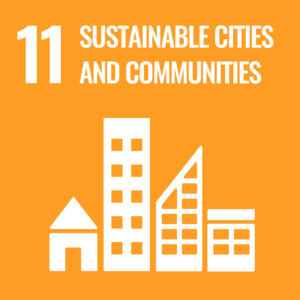
- Building locations to be more energy efficient through updates and modifications to equipment such as heating and ventilation systems, LED lighting or the use of Environmental or Building Management Systems to manage energy consumption
- Transitioning to electricity for store heating and cooling needs, to transition more quickly to renewable energy than available by natural gas
- In Belgium, their Court distribution center features include onsite solar panels, advanced LED lighting and use of biomethane in lieu of natural gas for heating, making the distribution center completely fossil free for its operations
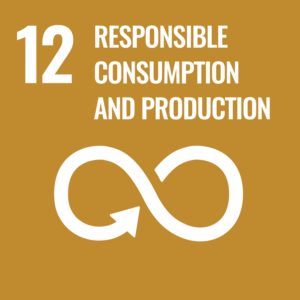
- 100% of manufacturing scraps diverted from landfill for their Tier 1 finished goods footwear suppliers
- In FY21, they saw a 12 p.p. increase for recycled polyester in apparel to 38% from FY20
- In FY21, they achieved 70% sustainable cotton by supplementing their use of recycled and organic cotton with third-party certified cotton
- 30% reduction in phylon midsole defect waste, prevented more than 2.4 million kg of waste and prevented 9.4 million kg of associated carbon emissions
- The majority of NIKE’s packaging in footwear is produced with over 90% recycled content
- NIKE is reducing the weight of the shipping cartons utilized to ship product globally from footwear suppliers by 24%
- NIKE completed two water restoration projects in Australia and India
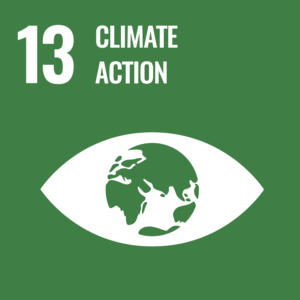
- Phase out of coal use in dyeing and finishing facilities and switch to lower-carbon fuels
- During FY21, they deployed NIKE’s Energy Minimum Program, which is an energy management foundation geared at achieving energy and cost savings
- During FY21, the EMEA outbound team reduced outbound transportation carbon impact by using multi-modal solutions and alternative fuels
- They also began utilizing trucks to replace air freight while maintaining the same service level in digital order transportation, reducing 70% of carbon emission compared with air freight in FY21

- In India, NIKE supported conversion of 30 hectares of farmland to drip irrigation practices in Maharashtra, engaging 75 farmers (17 of whom were women) in the project activities
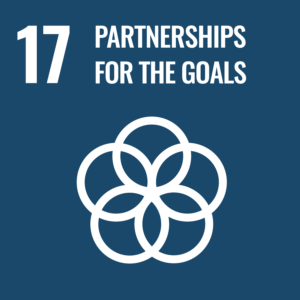
- Collabration with the U.S. Agency for International Development (USAID) Vietnam Low Emission Energy Program (V-LEEP) to support the Vietnamese Government’s renewable energy direct power purchase agreement (DPPA) pilot being launched jointly by USAID, the Vietnam Ministry of Industry and Trade, and the Electricity Regulatory Authority of Vietnam
- At COP26, NIKE helped to launch USAID’s Corporate Clean Energy Alliance, a coalition of businesses committed to working with governments across Southeast Asia to facilitate the rapid deployment of clean energy
Sustainability Certificates, Awards and Listings



